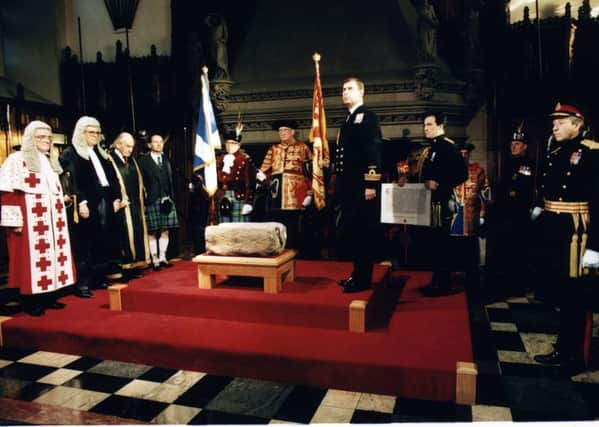Stone of Destiny return '˜not about Tory fortunes' in Scotland


Lord Forsyth, who served as Secretary of State for Scotland during the latter part of John Major’s tenure as Prime Minister has hit back at claims that the ancient Stone of Scone was used as a bargaining tool to try and secure a Tory vote from the Scottish electorate.
The former Scottish Secretary played a pivotal role in the stone’s return 20 years ago, but was incensed at the accusations that the Tories had attempted to revive their fortunes north of the border prior to the 1997 General Election.
He said: “I mean, do they really think I was that stupid?”
Advertisement
Hide AdAdvertisement
Hide AdInstead, Lord Forsyth claims that the looming publication of Cabinet papers detailing the stone’s theft by students on Christmas Day 1950 played a part in its return. The papers revealed that James Stuart, the then Scottish Secretary, had argued for the stone’s return, but the motion was thwarted by Prime Minister Winston Churchill who was fearful that it would make it seem that Government was advocating terrorism.
“I realised that 1996 was the 700th anniversary of the stone being taken, so I knew that if we published these documents there would have been a campaign to bring the stone back, and if I had said no, we’re not going to do it, it would have become the cause celebre”.
The stone of Destiny was officially returned to Scotland on 15 November 1996 following a handover ceremony at the border. It had sat under the coronation chair at Westminster Abbey for 700 years. The stone, which had originally been used for the crowning of Scots kings, was last used for the 1953 coronation of Queen Elizabeth II. It will be returned temporarily to Westminster for future coronations.
Today the stone is situated at Edinburgh Castle alongside the Scottish crown jewels.